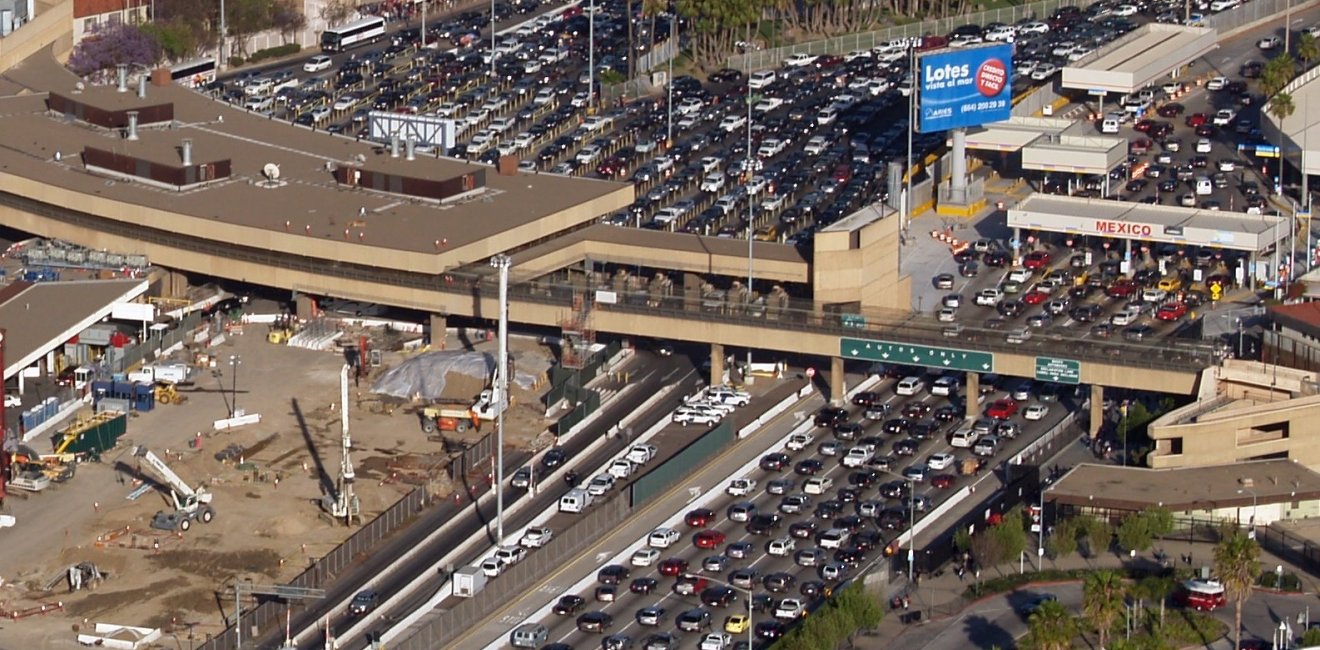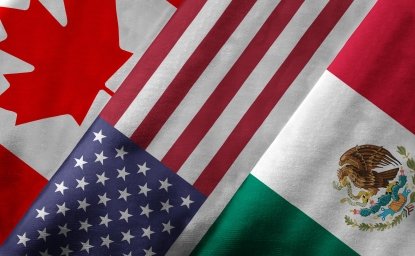With more than a half-trillion dollars of U.S.-Mexico trade each year and five million jobs across the United States that depend on it, there is much at stake for businesses and workers throughout the country as representatives from the United States, Canada, and Mexico continue the first round of negotiations in Washington to update the North American Free Trade Agreement.
There is no part of the country, however, that has as much on the line as the four U.S. states that share a border with Mexico. Mexico is the top export market for Texas, New Mexico, Arizona, and California, and the four states together sell 55 percent of all U.S. exports to Mexico. They facilitate an even greater portion, providing warehousing, transportation and other services for most of the 80 percent of all U.S.-Mexico trade that crosses the land border. If NAFTA were to fall apart, it would be a disaster for the thousands of companies and more than a million jobs along the border that depend on cross-border trade and tourism.
Fortunately, U.S. Trade Representative Robert Lighthizer made clear in his opening statement to kick off the negotiations that he understands the value of NAFTA to border communities. He stated, “I’ve always thought that communities along our borders have a particular equity in this agreement. In many cases their lives, businesses, and families are very much on both sides of the dividing line. They too are hardworking men and women trying to raise families and accumulate wealth. We must keep their interests paramount.” This statement is testament to the hard work of leaders from the border states over the past months and years to ensure that this administration knows just how much is on the line for them in the NAFTA talks.
If border states have the most to lose, they also have the most to gain from a successful NAFTA update, and they should vigorously pursue a set of objectives that would provide an economic boost for border communities. There are three key points in getting to this outcome.
First, border communities must continue to join together with agricultural communities and the business community to deliver the ‘do no harm’ message to the U.S. administration. Though Ambassador Lighthizer acknowledged the importance of NAFTA for many across the country, he also said that the agreement had “failed…countless Americans,” citing manufacturing job losses and a trade deficit with Mexico.
While it is undoubtedly true that the United States is facing structural challenges related to manufacturing employment and the overall trade deficit, both of these challenges predate NAFTA, making the renegotiations an inappropriate and ineffective venue to solve them. If the United States seeks to limit trade with Mexico and Canada, this would disrupt the regional system of production sharing that exists today, threatening U.S. jobs and competitiveness. Instead, the United States should seek to expand the benefits of NAFTA to an even greater number. Particularly important in this sense is strengthening workforce development programs to ensure that workers in each of the NAFTA countries have the skills needed as the demands of the labor market rapidly evolve. The mix of both pro-trade and potentially protectionist language in the U.S. Trade Representative’s opening statement is a reminder that though border communities have been heard, they have not yet won the day.
Second, as the on-the-ground facilitators of North American trade, border communities should press negotiators for the inclusion of a trade facilitation chapter to NAFTA that aims to streamline customs and other cargo-processing procedures. A study by Bloomberg found that congestion and processing delays cost the U.S. economy $7.8 billion dollars annually, so there is clearly much to be improved. That said, the U.S. and Mexican customs agencies already cooperate well and perform at a high level, so instead of simply relying on the WTO’s Trade Facilitation Agreement, which went into effect earlier this year, the relevant agencies will need to be given the mandate and flexibility to continue finding innovative ways to reduce the costs associated with doing business across the border while maintaining high security standards.
To further reduce the ‘border costs’ associated with trade in the region, officials from the three countries should use the NAFTA update to encourage much needed investment in border crossings and other transportation infrastructure to better connect our economies. They should recapitalize and expand the mandate for the North American Development Bank so that it has the resources and ability to finance and coordinate cross-border infrastructure projects. Negotiators could also commit to the development of a North American transportation plan to ensure that new highways built in one country do not simply lead to new bottlenecks across the border.
Finally, border states are especially important players in cross-border energy trade, which includes oil, natural gas, and electricity generated by renewable energy sources. When NAFTA was negotiated some twenty-five years ago, energy issues were barely touched upon since in Mexico the idea of opening up the sector to foreign participation was politically unthinkable. In 2013, however, Mexico took the leap and passed a constitutional reform to allow just that.
Now, with U.S. natural gas exports to Mexico quickly growing, any measures to strengthen the legal framework for this trade and the development of the needed infrastructure to facilitate it will offer an opportunity to shrink the U.S. deficit with Mexico. Though most analysts in the sector concur that, through what is known as NAFTA’s ratchet clause, energy investments are now protected by the agreement, it would be worthwhile to make this explicit in the updated accord. Furthermore, whether through the agreement or alongside its negotiation, the countries of North America would do well to update the process of permitting for cross-border energy infrastructure projects. Without energy infrastructure, we cannot take advantage of the efficiency and competitiveness gains available through the creation of an integrated North American energy market.
Preparations, including the official periods to submit comments and recommendations to the U.S. Trade Representative, have concluded, and the talks are underway. But with so much on the line for U.S. border communities, the work to protect and expand upon the benefits of a closer partnership with Mexico must continue full speed ahead.
This article was originally published on the Mexico Institute's blog on Forbes.com.






